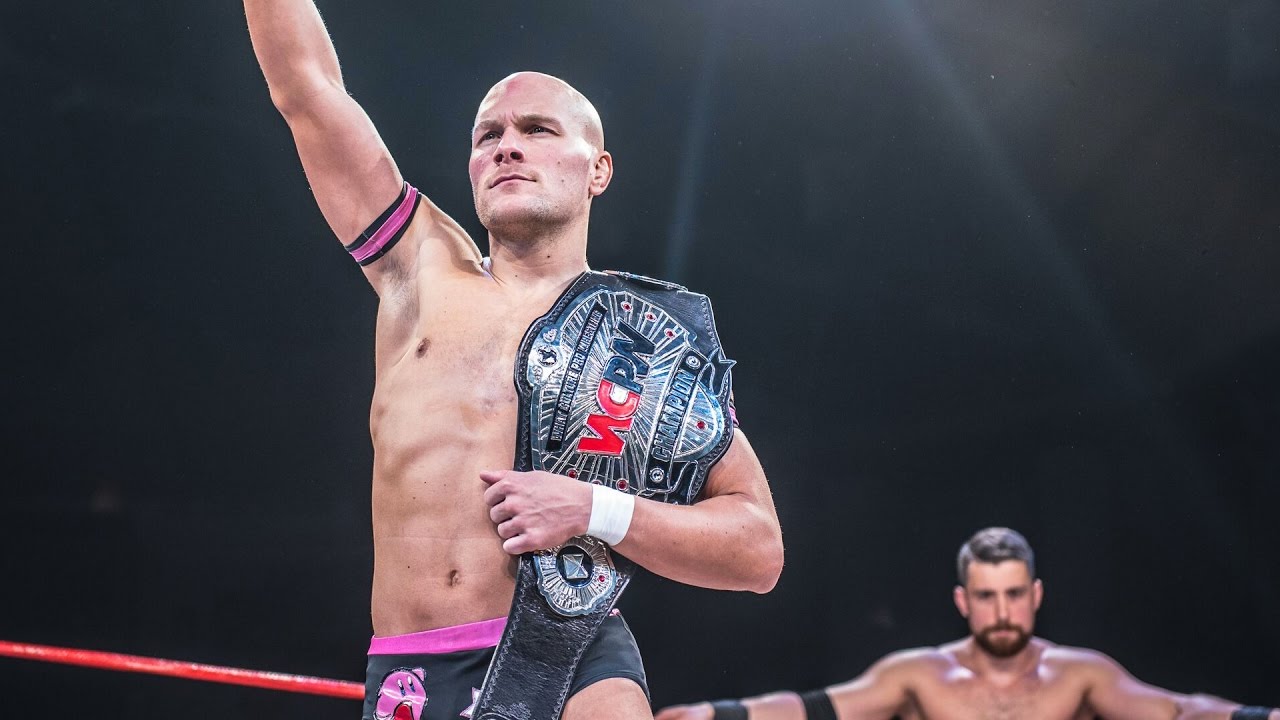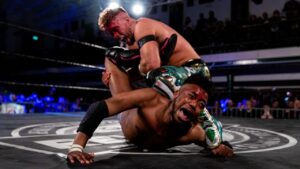WCPW: A brief yet brilliant run that made the wrestling world take notice
When a wrestling promotion launched on the back of a successful YouTube channel held its first show in a warehouse in Newcastle, nobody could have predicted the wild ride ahead.
WhatCulture had built a global audience through entertaining, informative and sometimes downright bonkers content. Despite their following, plenty of eyebrows were raised when they announced the launch of their own company.
It was certainly a risk – there were no guarantees that their existing audience would translate to a more niche product based in the UK.
The first WhatCulture Pro Wrestling show took place in June 2016, showcasing some of the best British indie talent including Big Damo, Joe Hendry, Martin Kirby, Joe Coffey and Rampage Brown. The YouTube personalities were also a key part of the early shows.
The promotion began to gain traction and started running events at larger venues, eventually branching out from their Newcastle base to Manchester and London.
It wasn’t long before they were able to attract some big names from overseas, and people really started to take notice when WWE legend Kurt Angle stepped foot in a WCPW ring.
‘The number of people who showed up was insane’
“In November 2016, we did True Legacy and I worked with Jim Cornette,” said Dave Bradshaw, who was brought in to commentate on WCPW shows after the initial set of filmings in Newcastle.
“I think that was the point where I was like, ‘OK this is actually pretty big’. It was a big arena, two-and-a-half-thousand people.
“We did a fan festival in the afternoon before the show and the number of people who showed up the meet the guys was insane! Bret Hart was there, for example, but the queues to meet the YouTubers from WhatCulture were as big as some of the wrestlers.
“They had struck gold because what they did – which hadn’t been done at the time and I don’t think anyone has done since – was take an already successful YouTube channel and blend those guys into an actual promotion with top independent talent. It was almost a new way of doing wrestling and it was huge.”
The in-ring product reached new heights in the following months, with the likes of Cody Rhodes, Will Ospreay, Drew McIntyre and Ricochet consistently putting on killer matches.
WCPW had arguably become the biggest indie promotion in Europe, and in a remarkably short amount of time. Unfortunately, tough times were around the corner.
Problems start to arise
First, it was the launch of NXT UK which meant they were no longer able to book some of the hottest acts from the UK scene. Pete Dunne, Tyler Bate and Joseph Conners were among those who competed in the inaugural WWE UK Tournament in Blackpool.
Then, YouTube announced changes to its advertising policy in the summer of 2017 and it became significantly harder for wrestling companies to make money from the platform.
There were still a few big names brought in from the United States, including the Young Bucks, but the product began to focus on promoting local talent once again.
READ MORE: How Alex McCarthy Became One of the Leading Wrestling Reporters
This trend coincided with the decision to rebrand. WCPW was no more and in its place stood Defiant Wrestling.
There were a few notable moments from the Defiant era – Gunther continuing his rapid rise, Pac returning home to Newcastle and new stars created such as Millie McKenzie.
However, the promotion wasn’t able to regain its momentum from an incredible opening year and those in charge decided to call it a day in 2019.
Impact on the wrestling world
WCPW might not have had the longevity its fans hoped for, but there is no denying that the company had an impact on the wrestling industry that can still be seen today.
For many, it served as a bridge to the huge world outside of WWE, which WhatCulture’s initial YouTube channel had primarily focused on.
The company also played a crucial role in the journeys of talent who are now doing great things all over the globe – Gabriel Kidd being a prime example.
Kidd went from rookie to champion in WCPW and is now one of the most entertaining acts in New Japan Pro Wrestling, tipped by many to be a future leader of the Bullet Club.
Meanwhile, Hendry – perhaps the name most associated with the promotion – has been on a roll since joining TNA and even won gold in 2022.
“I still get a lot of people, even now, wanting to talk about WCPW and telling me that is what introduced them to the indie scene,” Bradshaw continued. “It definitely had an impact.
“People in wrestling can have quite short memories and something that ended five years ago no longer seems relevant, but for some reason WCPW sticks in people’s minds. On that basis alone, it must have done something right.”


